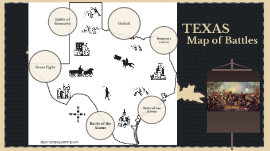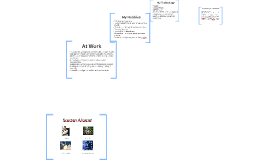Interactive Map
Transcript: Cory Malkin IML 201 SOURCES As Vanessa's triptych assignment duly notes, from young age, children are presented images in popular films that portray princes, princesses, heroes, etc. that many will aspire to be. These characters, and, "the vast array of media images... produce homogenous images for us of the perfect look, the perfect body, and the perfect pose" (98). While these images may seem harmless to many, "images can both exert power and act as instruments of power" (93). They most effectively communicate the dominant ideology of a particular culture and remain unquestioned for quite some time. Elyse Wang's Triptych Overview Akshay Ravi's Triptych The concept of Docile Bodies permeates our everyday society and many individuals live their lives unaware of its influence. While there are certain benefits from this ideology - cooperation and technological/scientific progression - this concept also has the ability to allow those in power to influence and manipulate culture at large for their own gain. Often times, these dominant ideology creators also have the power over life and death of those they influence. Only through the power and awareness of the individual in society can we keep this system of power in check. States: 1. The Apple ad begins playing to introduce the rise of consumerism and its role in docile bodies--> 2. The ad fades into the image to show the modern price of consumerism 3. Pan right across the image and finish at the text Children do not only see these ideas portrayed in films, they also appear in objects – such as toys – that are also mass consumed. These objects are essentially images that, "are elements of contemporary culture through which assumptions about beauty, desire, glamour, and social value are both constructed and responded to" (21). Children are surrounded by these images, toys, and objects that begin to constitute as normal and eventually, truthful. The reasoning behind this, according to Struken and Cartwright is that, "much of the power of photography still lies in the shared belief that photographs are objective or truthful records of events" (17). States: 1. Ken Burns slide down the image, slowly revealing the last frame containing Moana, allowing viewer to compare images. 2. Audio from "A Whole new World" plays during the image movement the ironically note that each of these stories occur with similar characters in the same world 3. The triptych dissolves into the text to allow for closer reading of the rationale. States: 1. The first ad ever begins playing to take us back to the beginning of consumer culture: 2. Fades into the text above 3. Triptych appears over text and the results of this concept are clearly portrayed Conclusion Interactive Map Vanessa's Triptych Lewis Forde's Triptych So where does the creation of normalcy and the establishment of consumer culture lead us? To begin with, it keeps the state moving forward. When the state is functioning well because citizens are buying into dominant ideologies, broader goals may be acheived – not necessarily for the betterment of everyone. Struken and Cartwirhgt point out that, "the modern state has a vested interest in the maintainence and regulation of its citizens; in order to function properly it needs citizens who are willing to work, to fight in wars," and if necessary, die (97). This concept of docile bodies creates a society of uniformity and conformity that can result in many benefits: scientific progress, social harmony, etc. Nevertheless, this society can easily be manipulated and controlled by those creating these dominant images. And, "because we as viewers of advertising images do not often think of the ways in which they are operating as ideological texts, these images often have the power to affect our self-images" (98). We will willingly participate and cooperate with the society – living or dying due to the decisions of others. The Impact of Docile Bodies Are we then helpless? Pesimistically, Struken and Cartwright note that, "the lone oppositional reading of a single viewer may mean nothing compared to the popularity of a particular cultural product" (59). Yes, perhaps we are helpless. But then again,maybe not. After all, "power thus is most effective when it is invisible and unverifiable" (99). So, if the dominant and invisible powers that perpetuate this dominant ideology are called out and exposed, their power can lose its deathly grip. Individuals have the choice to buy into the idea of docile bodies or reject it for the natural instability it has by its very nature. But, as Prince EA points out in the video above, that power lies within the individual who must first, 'wake up'. One of themes I noticed surface repeatedly throughout the course was the concept of docile bodies. Struken and Cartwright discuss the impact of this concept at length: "a central aspect of Foucault's theory is that systems are in place that encourage us to self-regulate without any active threat of punishment"

















